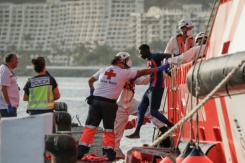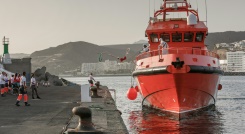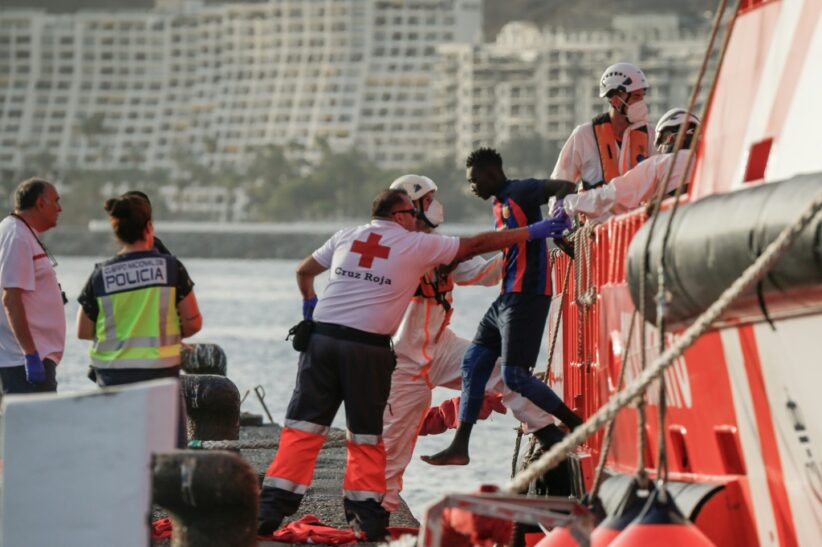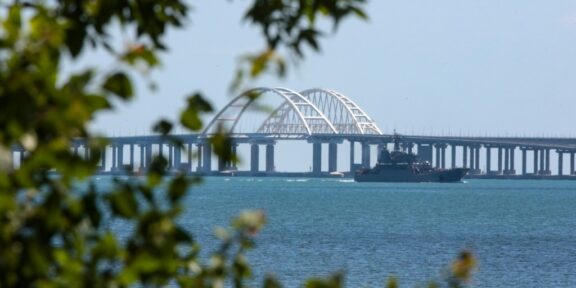
MOVES dateline, UPDATES with rescue ship arriving at Gran Canaria, ADDS picture mention
by Desiree MARTIN with Adrien MAROTTE in Dakar
Spain’s coastguard said Monday it rescued 86 migrants from sub-Saharan Africa aboard a boat near the Canary Islands that had been spotted earlier in the day by a rescue plane.
The Salvamento Maritimo coastguard service said they had found the boat with six females and 80 males on board as rescuers were searching for a missing migrant boat that had “left Senegal with around 200 people on board”.
It did not indicate the ages of those rescued.
When a rescue plane spotted the vessel about 71 nautical miles south of the island of Gran Canaria, it was initially thought to have “around 200 people on board”, a spokeswoman said.
“We can’t be 100 percent sure but it’s likely it is the same boat,” she said.
But the coastguard later acknowledged that the estimate by the plane’s crew was incorrect.
“It is difficult to determine the number of people from the air,” she later told AFP.
A rescue ship brought the migrants to the port of Arguineguin on Gran Canaria, where they were greeted by Red Cross workers who provided them with medical care.

The situation remains confused, however, and the spokeswoman told AFP she was not able to say whether there was another boat adrift in the same area with 200 people on board.
Helena Maleno, head of Spanish NGO Caminando Fronteras, which helps migrant boats in distress, said a vessel had left the southern Senegalese town of “Kafountine on June 27 with approximately 200 people on board”.
“There are many minors on board,” she said in an audio message, explaining the families had “told us about the disappearance of the boat, saying they had had no news for several days”.
Kafountine is a fishing village in the southern part of Senegal, which lies at least 1,700 kilometres (more than 1,000 miles) south of the Canary Islands.
She said the NGO knew of two other boats with around 120 people on board that were also missing after leaving Senegal on June 23.
- An easy departure point –
Senegal, and more specifically the Kafountine region, is a regular departure point for migrants seeking to reach Europe.
For them, the nearest entry point is the Canary Islands, although Spain itself is often only a stopover as the migrants make their way to other EU countries.
David Diatta, the mayor of Kafountine, told AFP some migrants had recently left the village but that he’d not heard any news about them.
“They are Senegalese, Gambians, Guineans, Sierra Leoneans… Most of the time, they are foreigners,” he said.
He said people chose to leave from Kafountine because it is surrounded by islands and inlets that provide hiding places for people smugglers and migrants.
“As a local authority, we have tried to raise awareness, but the state’s silence is regrettable — there are very few gendarmes on the ground (to stop them) and we lack the resources,” he said.
In June 2022, a pirogue — a long wooden vessel — with migrants on board caught fire in the area, leaving 15 dead and 20 injured.
“People from outside the area organise their departure as they wish, and it’s only after the event that we find out about it,” said Abdoulaye Demba, head coordinator of the local fishing council.
He said none of the migrants’ families approach him directly for help because they know it is against the law.
- A highly dangerous journey –
The Atlantic route to the Canaries is particularly dangerous due to the strong currents, with migrants travelling in overloaded boats, which are often unseaworthy, and without enough drinking water.
Many boats leave from ports in Morocco, Western Sahara or Mauritania but they also come from countries further south such as Senegal.
According to figures released by Caminando last week, 778 people died while trying to reach the Canary Islands by boat in the first half of 2023.
Figures from the International Organization for Migration point to 126 dead or missing over the same period.
Spain has long been a key entry point for migrants seeking a better life in Europe, but the number of Atlantic crossings began surging in late 2019 after increased patrols along Europe’s southern coast dramatically reduced Mediterranean crossings.
In the first six months of this year, a total of 7,213 migrants reached the Canary Islands by boat. That figure is nearly 20 percent lower than the 8,853 that arrived in the same period a year earlier, interior ministry figures show.










